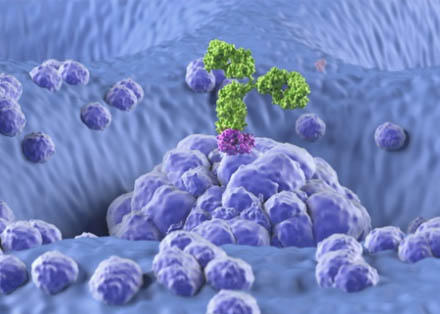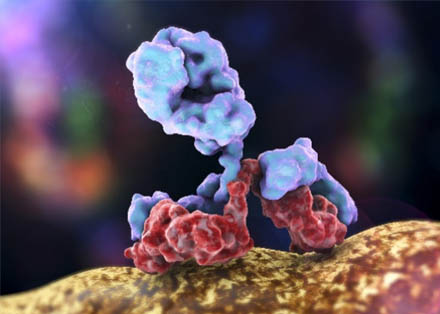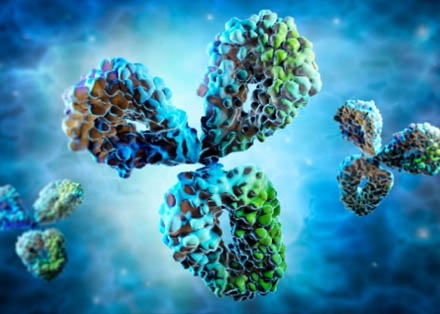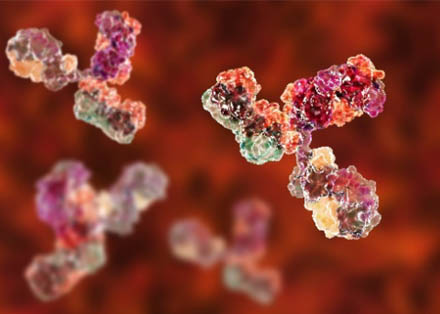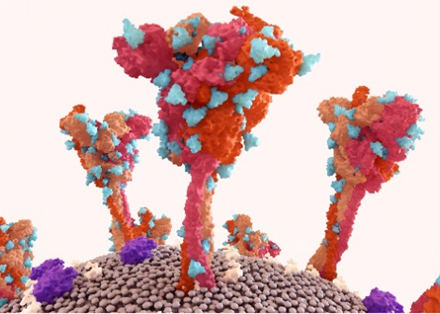GlycoRNA Analysis Technologies
The identification of glycoRNAs as small noncoding RNAs with complex N-linked glycans changes our perspective on RNA biology and intercellular signaling. Current scientific findings reveal that RNAs function as glycosylation platforms with high levels of sialic acid and fucose modifications while conventional beliefs held glycans as modifiers only for proteins and lipids. GlycoRNAs found on the cell surface engage with Siglec receptors and may modulate immune regulation and responses to infection and autoimmune diseases.
The precise positioning and functional capabilities of these molecules necessitate the development of sensitive detection methods that can process high volumes of data while resolving spatial details about glycoRNAs. The traditional approaches to RNA analysis fail to detect this specific post-transcriptional modification layer. Creative Biolabs has developed an integrated platform for GlycoRNA analysis that merges glycoRNA profiling, glycoRNA functional analysis and glycoRNA imaging service to allow scientists to study glycoRNA structure and function and their distribution throughout various biological systems.
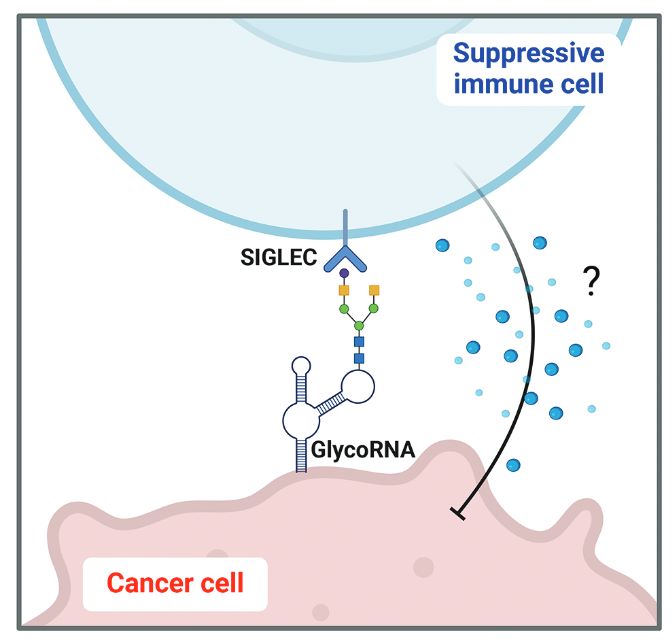 Fig.1 GlycoRNA–SIGLEC interaction may drive immune suppression in cancer.1
Fig.1 GlycoRNA–SIGLEC interaction may drive immune suppression in cancer.1
GlycoRNA-seq: High-Throughput Sequencing of Glycosylated RNAs
GlycoRNA-seq is a powerful technology tailored to uncover the complete repertoire of glycosylated RNAs within living systems. By metabolically incorporating clickable azido sugars such as Ac₄ManNAz into active cells and applying bioorthogonal DBCO click chemistry, glycoRNAs are selectively enriched and sequenced. This method is highly suitable for living cultured cells, primary cells, and animal tissue samples, offering an unbiased view of glycoRNA molecular composition and global glycosylation patterns across physiological and pathological states.
Through GlycoRNA-seq, researchers can profile glycoRNA molecular identities, cell-type-specific expression, and modifications across developmental stages or disease progression. It enables precise mapping of conserved glycoRNA signatures and detection of novel glycoRNA species, which are often invisible to traditional RNA-seq approaches. In a landmark study, Flynn et al. used GlycoRNA-seq to demonstrate that glycosylated Y RNAs and small nuclear RNAs are conserved across mammalian cells and mediate interactions with Siglec receptors, highlighting an unexpected extracellular role for RNA.
Novel GlycoRNA Imaging: Visualizing GlycoRNAs in Single Cells
This advanced imaging approach facilitates high-resolution, single-cell visualization of glycoRNAs, effectively integrating biochemical detection with spatial analysis. By employing specialized binding agents that target glycoRNA-associated glycans, followed by a sequence of molecular reactions that amplify the signal, it produces localized fluorescent markers indicating the precise subcellular distribution of glycoRNAs. The methodology is highly adaptable, suitable for use with fixed cells, freshly obtained tissues, and formalin-fixed paraffin-embedded (FFPE) sections, thereby enabling researchers to map glycoRNA localization with exceptional sensitivity.
This technique is particularly effective for examining the localization of glycoRNAs on the cell surface versus intracellular compartments, assessing spatial variability within tissues, and observing dynamic redistribution during various biological processes. Its signal amplification strategy ensures robust detection even for glycoRNAs present in low abundance, offering enhanced sensitivity and specificity compared to traditional RNA-FISH methods. In practical applications, researchers have successfully visualized glycoRNAs on the plasma membranes of live HeLa and K562 cells, observing dynamic relocalization in response to inflammatory stimuli, thereby highlighting their potential involvement in immune response modulation.
Clier-qPCR: Quantitative Validation of GlycoRNAs
Clier-qPCR merges bioorthogonal chemistry with real-time PCR, providing a quantitative platform specifically designed for glycoRNA validation. After metabolic incorporation of azido sugars and DBCO-mediated biotin tagging, glycoRNAs are enriched using streptavidin-based pull-down before undergoing reverse transcription and quantitative amplification. Clier-qPCR is highly adaptable for use with fresh cells, sorted subpopulations, and minimally processed primary samples, delivering absolute or relative quantification of glycoRNA expression levels.
This technology empowers researchers to monitor glycoRNA expression kinetics, glycosylation dynamics under stimulation, and functional consequences of glycoRNA perturbation. Clier-qPCR stands apart by exclusively amplifying the glycosylated RNA fraction, eliminating noise from unmodified RNAs. For example, a case study investigating human monocytes used Clier-qPCR to quantitatively track upregulation of glycoRNA-L and glycoRNA-S species upon pro-inflammatory cytokine exposure, correlating these changes with enhanced Siglec-5-mediated adhesion. These findings established a direct link between glycoRNA dynamics and immune cell functionality.
Comparative Advantages of GlycoRNA Analysis Technologies
A deep understanding of glycoRNA biology demands flexible analytical tools, each optimized for different research objectives. Creative Biolabs offers a portfolio of complementary technologies, empowering researchers to match their experimental needs precisely.
| Technology | Suitable Samples | Research Focus | Main Advantages | Limitations |
|---|---|---|---|---|
| GlycoRNA-seq | Live cultured cells, primary tissues, animal models | Molecular identity, glycosylation patterns, transcript profiling | High-throughput, comprehensive, discovery-driven | Requires larger RNA input; limited spatial information |
| Novel GlycoRNA Imaging | Fixed cells, tissues (fresh or FFPE) | Subcellular localization, spatial dynamics | Single-cell resolution, multiplex potential, compatible with co-staining | Primarily qualitative; quantitation requires optimization |
| Clier-qPCR | Fresh cells, sorted populations, minimally processed samples | Quantitative dynamics, target validation | High sensitivity, target-specific quantification, fast turnaround | Limited to known targets; depends on efficient enrichment |
By combining these methods, researchers can move seamlessly from global discovery to spatial localization and precise quantification, building a complete understanding of glycoRNA biology from multiple dimensions.
Application Scenarios: Where GlycoRNA Analysis Makes a Difference
The emerging field of glycoRNA research opens exciting avenues across multiple biomedical disciplines. Understanding where and how glycoRNAs operate can reshape disease models and therapeutic strategies. In immunology, glycoRNAs have been implicated as ligands for Siglec receptors on immune cells. By modulating these interactions, glycoRNAs could serve as novel immune checkpoint regulators in cancer or autoimmune diseases. GlycoRNA-seq and novel glycoRNA imaging enable profiling and localization of these ligands under various immune activation conditions. In oncology, tumor cells often remodel their surface glycocalyx. Emerging evidence suggests that tumor-derived glycoRNAs could participate in immune evasion or metastatic niche formation. Mapping glycoRNA dynamics through novel glycoRNA imaging in tumor biopsies could help identify new biomarkers or therapeutic targets.
In infectious disease, viruses such as influenza and HIV exploit host cell surface molecules for entry. Understanding the role of surface-expressed glycoRNAs during viral infections may uncover novel antiviral strategies. For example, researchers have started using GlycoRNA-seq to monitor glycoRNA expression changes during viral challenge models. Additionally, in regenerative medicine, glycoRNAs may modulate stem cell niche signaling. Exploring glycoRNA profiles in induced pluripotent stem cells (iPSCs) through Clier-qPCR and novel glycoRNA imaging provides new dimensions for improving cell therapy strategies. Collectively, Creative Biolabs' glycoRNA analysis solutions support dynamic, spatial, and quantitative investigation across basic research, biomarker discovery, and therapeutic innovation.
The emergence of glycoRNAs as a distinct and functionally important class of biomolecules calls for equally advanced technologies to study them. Creative Biolabs provides a comprehensive GlycoRNA analysis suite to empower researchers at every step—from molecular identification, spatial localization, to dynamic quantification. Through these synergistic technologies, we enable detailed exploration of glycoRNAs' roles in immune modulation, cellular communication, autoimmunity, and cancer biology. Partner with Creative Biolabs to accelerate your glycoRNA research with precision, sensitivity, and scientific rigor.
References:
- KIM, H.S, et al. "GlycoRNA: A new player in cellular communication." Oncology Research,2025;33(5):995–1000 https://doi.org/10.32604/or.2025.060616
- Flynn, Ryan A., et al. "Small RNAs are modified with N-glycans and displayed on the surface of living cells." Cell, vol. 184, no. 12, 2021, pp. 3109–3124. https://doi.org/10.1016/j.cell.2021.04.023
- Fu, Menghan, et al. "GlycoRNA-L and glycoRNA-S mediate human monocyte adhesion via binding to Siglec-5." bioRxiv, 27 Aug. 2024, https://doi.org/10.1101/2024.08.27.609838


